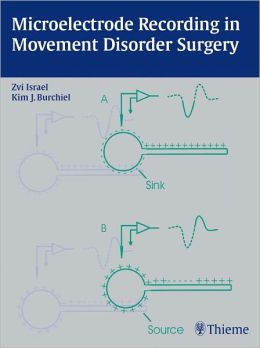-80%
Laboratory Diagnosis in Neurology: A Comprehensive Guide to Diagnostic Methods
Introduction: Unveiling the Mysteries of Neurological Disorders through Laboratory Analysis
Laboratory Diagnosis in Neurology offers a wealth of knowledge, providing a comprehensive guide to the analysis of cerebrospinal fluid (CSF), serum, and tissue samples affected by neurological diseases and syndromes. This meticulously crafted volume encompasses all the essential measuring parameters and methods, empowering clinicians with the necessary tools to unravel the complexities of neurological conditions.
Chapter 1: Delving into the Basics of Neurolaboratory Analysis
The book opens with a thorough introduction to the fundamental principles underlying the analysis of neurological specimens. The authors provide a detailed examination of the different types of samples, their collection methods, and their potential applications in diagnostic testing. This foundational knowledge sets the stage for further exploration of the specific methodologies employed in neurolaboratory analysis.
Chapter 2: Unlocking the Secrets of CSF Analysis
The examination of cerebrospinal fluid plays a crucial role in the diagnosis of numerous neurological disorders. This chapter delves into the various techniques used to analyze CSF, including microscopic examination, cell counting, biochemical testing, and molecular analysis. The authors highlight the significance of each method, guiding readers through the interpretation of findings and their correlation with specific neurological conditions.
Chapter 3: Neurochemical Examinations: Unraveling the Molecular Landscape
Neurochemical examinations encompass a range of advanced techniques employed to detect and quantify various neurochemicals in CSF, serum, and brain tissue. This chapter explores the principles of neurochemical assays, including mass spectrometry, chromatography, and immunoassays. The authors discuss the clinical applications of these methods, particularly in the diagnosis and monitoring of neurodegenerative disorders.
Chapter 4: Neuroimmunology: Shedding Light on the Immune System in Neurology
The intricate interplay between the immune system and neurological function is the focus of neuroimmunology. This chapter examines the methods for detecting immunological markers in CSF and serum. The authors provide insights into the significance of these markers in the diagnosis and management of various autoimmune and inflammatory neurological disorders.
Chapter 5: Microbiology and Virology: Unmasking Infectious Agents in Neurological Disease
Microbiology and virology play a pivotal role in identifying infectious agents that can cause neurological manifestations. This chapter delves into the principles and techniques used to detect and characterize bacteria, viruses, parasites, and fungi in CSF, serum, and tissue samples. The authors provide guidance on interpreting laboratory findings to differentiate between acute and chronic infections, as well as to determine the appropriate antimicrobial therapy.
Chapter 6: Neurogenetic Tests: Decoding the Genetic Basis of Neurological Disorders
Neurogenetic testing involves the analysis of DNA and RNA to identify genetic mutations associated with neurological diseases. This chapter explores the various methods used in neurogenetic testing, including cytogenetic analysis, fluorescence in situ hybridization (FISH), and next-generation sequencing (NGS). The authors discuss the clinical applications of these techniques and their role in diagnosing and predicting the prognosis of genetic neurological disorders.
Chapter 7: Evaluation of Biopsies: Providing Histopathological Insights
Biopsy analysis is essential for the diagnosis and classification of neurological tumors and other neuropathological conditions. This chapter provides a comprehensive overview of the techniques used in neuropathology, including histochemical staining, immunohistochemistry, and electron microscopy. The authors highlight the characteristic histopathological features of various neurological diseases and their correlation with clinical symptoms.
Chapter 8: Practical Pearls and Pitfalls: Enhancing Diagnostic Accuracy
In this concluding chapter, the authors present a wealth of practical tips and insights, highlighting potential pitfalls and pearls that can enhance the accuracy of laboratory diagnosis in neurology. They emphasize the importance of quality control, standardization, and proficiency testing to ensure reliable and reproducible results. Additionally, the authors provide a comprehensive appendix with valuable resources, including reference values, quality control guidelines, and tables summarizing key findings for specific clinical disorders.
Conclusion: Empowering Clinicians with Diagnostic Excellence
Laboratory Diagnosis in Neurology serves as an invaluable resource for neurologists, laboratory physicians, and pathologists seeking to expand their knowledge and refine their diagnostic skills in neurology. The comprehensive coverage of measuring parameters, methods, and interpretation criteria empowers clinicians to effectively analyze and interpret laboratory findings, leading to more accurate diagnoses and improved patient care.










Reviews
Clear filtersThere are no reviews yet.